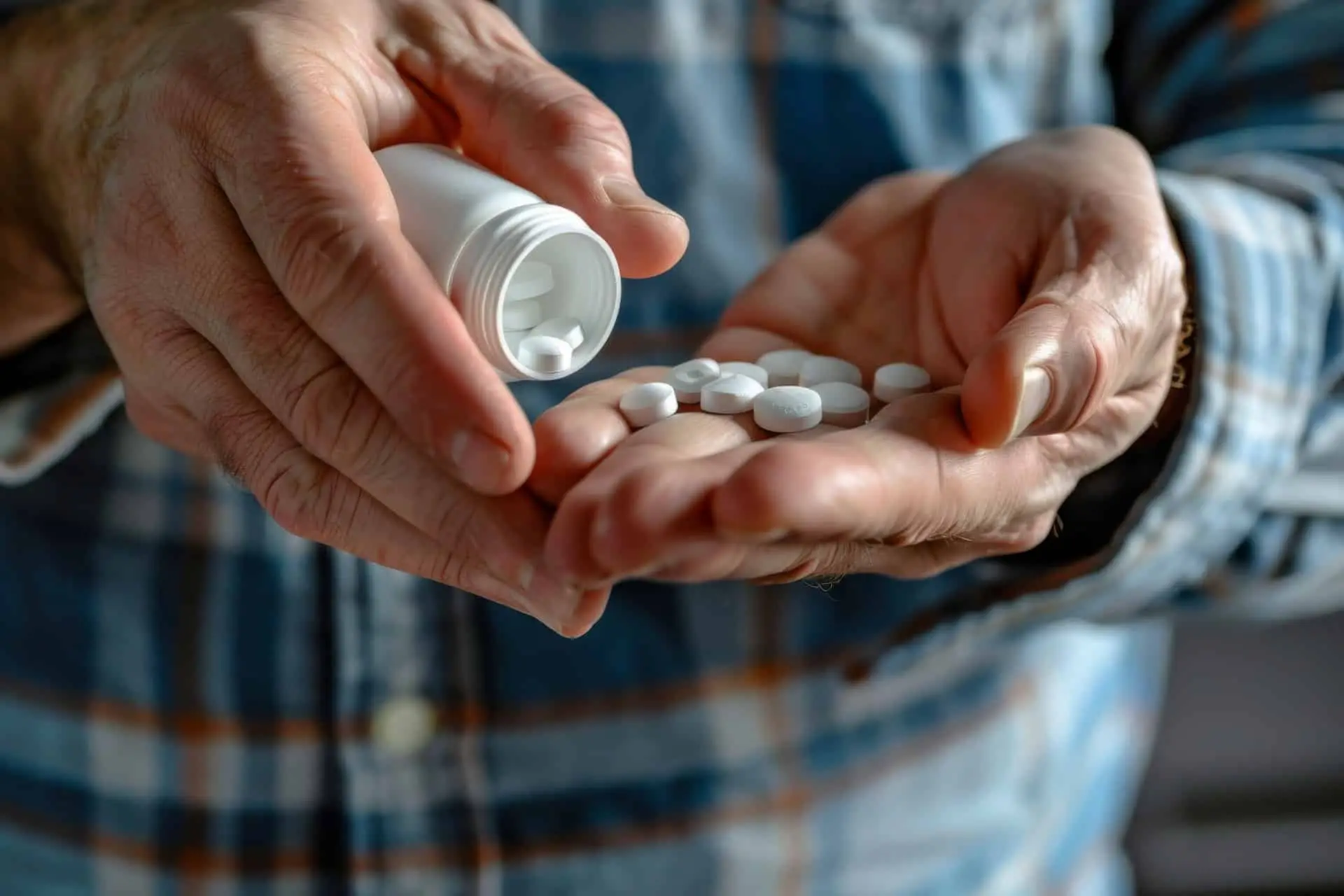

Commercial Businesses

Research Companies


The digestive system is an intricate set of processes the body uses to break down and absorb nutrients. Compounds like chenodeoxycholic acid (CDCA) are pivotal in digestion and overall gastrointestinal health. This article outlines how the digestive system works and the role of CDCA in its processes.
MedicaPharma is a trusted partner for a range of businesses across multiple sectors in the healthcare industry.




MedicaPharma is an EU-based supplier of GMP-certified APIs that serves leading healthcare institutions and research organizations. Click here to download our full API product list.
The process of digesting food is a complex and coordinated set of steps that starts with ingestion and continues through the digestive tract.
Here are the simplified steps in the digestive process:
Digestion starts in the mouth during the chewing process. The salivary glands release saliva, which contains enzymes that break down starches in carbohydrates, turning food into a semi-liquid substance called chyme.
After chewing, the food enters the esophagus, a muscular tube that connects the mouth to the stomach, through a process called peristalsis.
The chewed food reaches the stomach and encounters gastric juices that contain hydrochloric acid and pepsin. These substances create an acidic environment that aids in breaking down proteins. The stomach’s muscular contractions further mix and churn the food, forming a thick, partially digested liquid called chyme.
Chyme is slowly released into the small intestine, where most of the digestion and nutrient absorption processes occur. The pancreas secretes digestive enzymes, such as amylase, lipase, and protease, into the small intestine to continue breaking down carbohydrates, fats, and proteins.
The liver also contributes to digestion by producing bile, which is stored in the gallbladder and released into the small intestine. Bile emulsifies fats, breaking them into smaller droplets for better enzyme action.
The inner lining of the small intestine is covered in tiny finger-like structures called villi and microvilli, which significantly increase the surface area available for absorption. Nutrients, such as glucose, amino acids, and fatty acids, are absorbed through these structures into the bloodstream.
Any remaining undigested food, along with water and electrolytes, moves into the large intestine, where further absorption of water and electrolytes occurs. The large intestine is also home to a diverse population of beneficial bacteria, which help ferment and break down certain indigestible carbohydrates and produce vitamins.
The large intestine ultimately forms feces by compacting and dehydrating the remaining material, which is stored in the rectum and eliminated from the body during a bowel movement.

Chenodeoxycholic acid (CDCA) is a primary bile acid produced in the liver and secreted during the digestive process.
CDCA enables the following mechanisms during the digestive process:
CDCA, along with other bile acids, is stored in the gallbladder, which contracts and releases bile into the small intestine. Bile acids like CDCA emulsify dietary fats, breaking them down into smaller droplets and dispersing them into the watery environment of the small intestine.
In addition to fat emulsification, CDCA and other bile acids facilitate the action of digestive enzymes. The pancreas secretes digestive enzymes into the small intestine, including lipase, which breaks down fats into fatty acids and monoglycerides. The emulsification by bile acids makes it easier for lipase to access and digest these fats.
CDCA also aids in forming micelles – tiny spherical structures composed of multiple components, including bile acids, fatty acids, monoglycerides, and cholesterol.
Micelles serve as vehicles to transport fat-soluble substances, such as fat-soluble vitamins (A, D, E, and K), across the watery mucus layer lining the small intestine and into the absorptive cells of the intestinal wall. This transport is essential for the absorption of these nutrients.
CDCA plays a role in cholesterol management within the digestive process by helping maintain cholesterol homeostasis in the intestines. It works by limiting cholesterol absorption, which can affect overall cholesterol levels in the body.
MedicaPharma is a trusted and fully licenced API distributor based in Europe that leverages a global network of GMP manufacturers to supply high-quality API’s and pharmaceutical intermediates to healthcare organizations all over the world.
Different countries and jurisdictions may have varying regulatory requirements, with poor enforcement of relevant rules and regulations. There may be accountability and transparency issues associated with manufacturing and distribution, which increases your risk of receiving non compliant products.
All MedicaPharma APIs are being checked within a closed GDP logistics circuit; in – and outgoing checks secure the quality and supply of the right material.
Leverage Our Network of 400+ GMP Manufacturers | Access High-Quality Chemicals Produced to GMP Standards | Experience Superior Sales and Support Services |
MedicaPharma partners with over 400 leading global producers to supply hospitals, pharmacies, research facilities, and educational institutions. | All our products are produced in regulated, GMP-compliant facilities and shipped with original documentation. No repacking or relabeling. | MedicaPharma is committed to providing trust, accountability, and transparency. We guarantee our products and support you from start to finish with first-in-class customer service. |
Obtaining your desired quotation from MedicaPharma is easy; simply complete the form below to begin processing your quote request.
Please note: MedicaPharma cannot and will not supply customers in the United States due to commercial restrictions.
"*" indicates required fields
The quality of CDCA depends on the distributor and manufacturer. MedicaPharma supplies GMP-certified Chenodeoxycholic Acid (CDCA) to leading healthcare institutions. Click here to request a quote.
CDCA is stored in the gallbladder and released into the small intestine when dietary fats are consumed. In the small intestine, CDCA emulsifies dietary fats, facilitates fat digestion, and aids in the absorption of fat-soluble nutrients.
CDCA’s role in digestion is critical because it ensures the efficient breakdown and utilization of dietary fats. Emulsification by CDCA makes fats more accessible to digestive enzymes, and it helps in the absorption of fat-soluble nutrients, including crucial vitamins. CDCA’s function in regulating cholesterol levels in the intestines also has implications for overall cholesterol management in the body.
EU-based supplier MedicaPharma provides high-quality APIs and pharmaceutical intermediates to leading sales, research, and education institutions. Click here to request a quote.
GMP (Good Manufacturing Practices) and GDP (Good Distribution Practices) are quality assurance systems essential to the safety of products produced by the pharmaceutical industry. GMP guidelines typically cover the manufacturing processes while GDP governs how the products are transported and delivered.
Supplier of Special Active Pharmaceutical Ingredients (GMP)
World Wide Shipping – Get a Quick Quote Now – Small quantities in GMP available
MedicaPharma – WORLDWIDE NICHE API SPECIALIST
All materials supplied according to:


Obtaining your desired quotation from MedicaPharma is easy; simply complete the form below to begin processing your quote request.
"*" indicates required fields
Obtaining your desired quotation from MedicaPharma is easy; simply complete the form below to begin processing your quote request.
Please note: MedicaPharma cannot and will not supply customers in the United States due to regulatory restrictions.
"*" indicates required fields